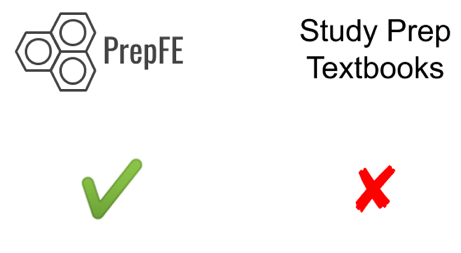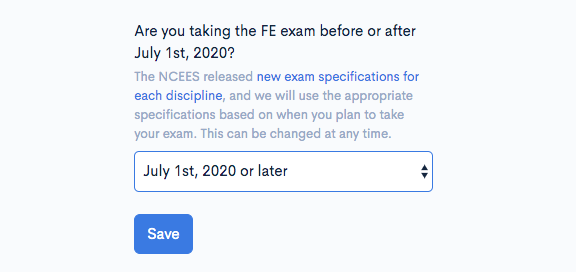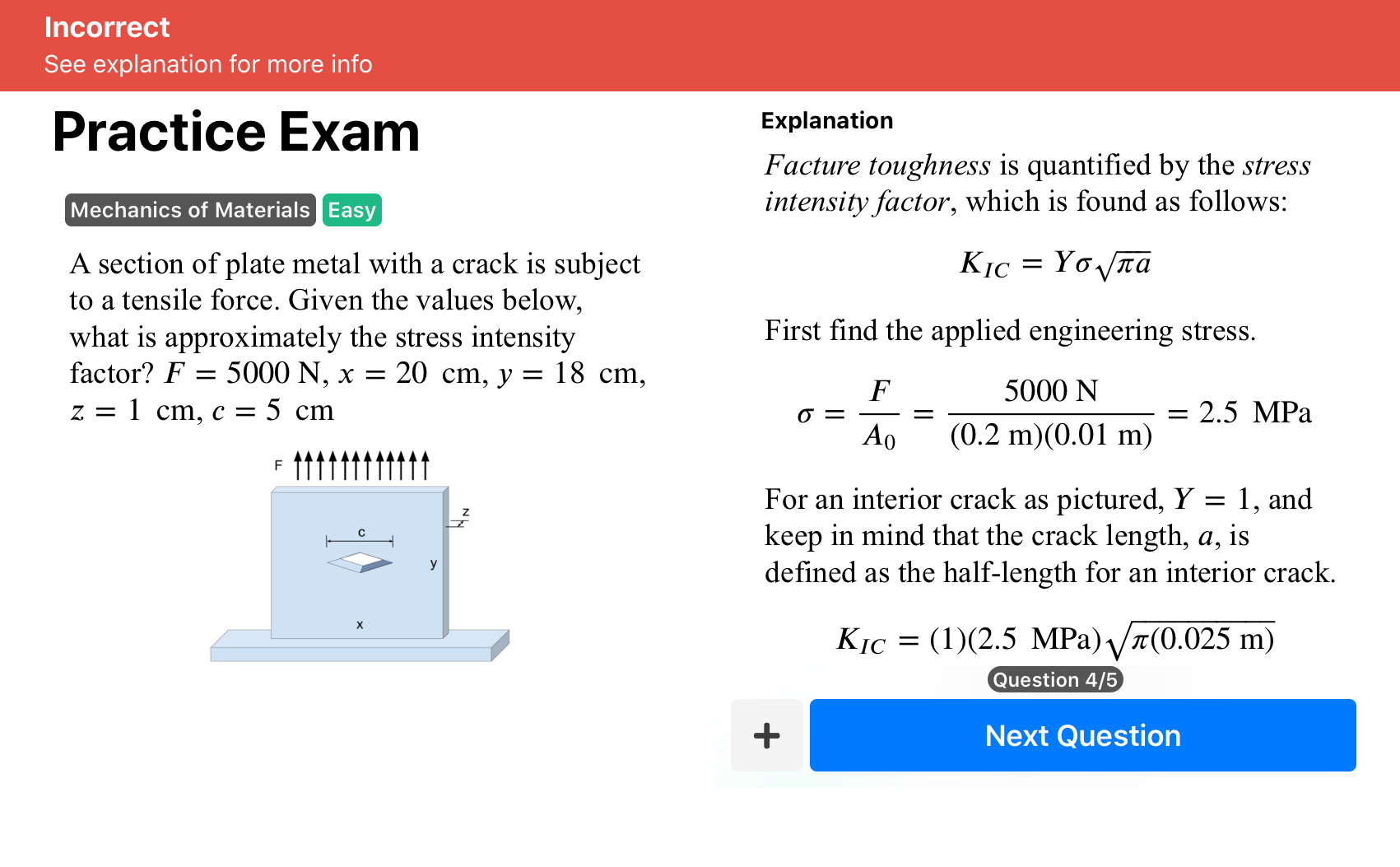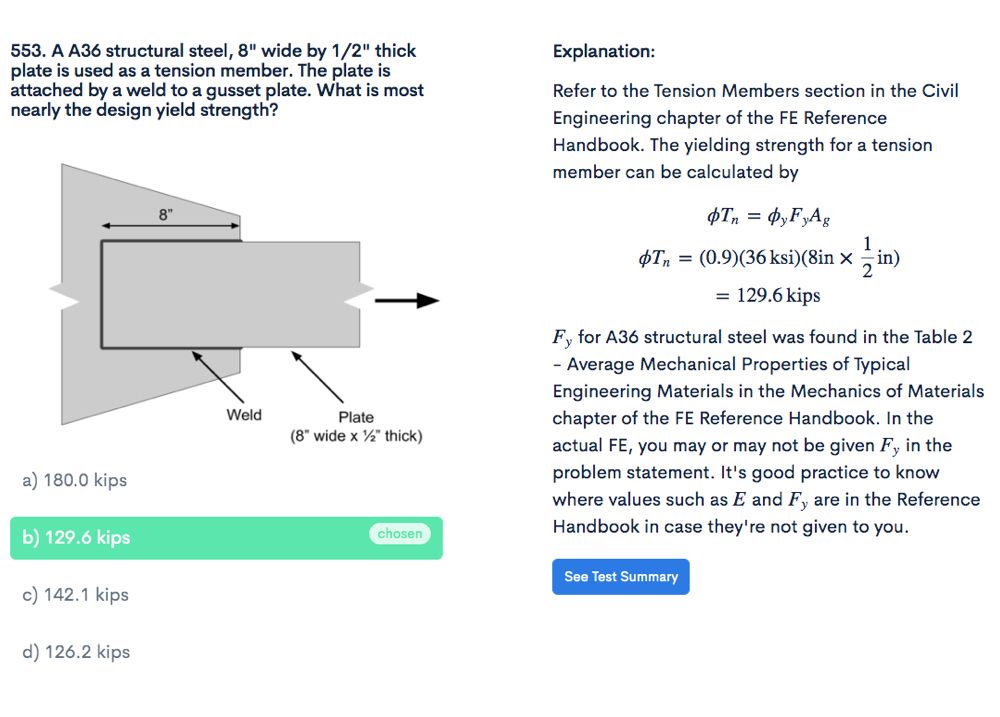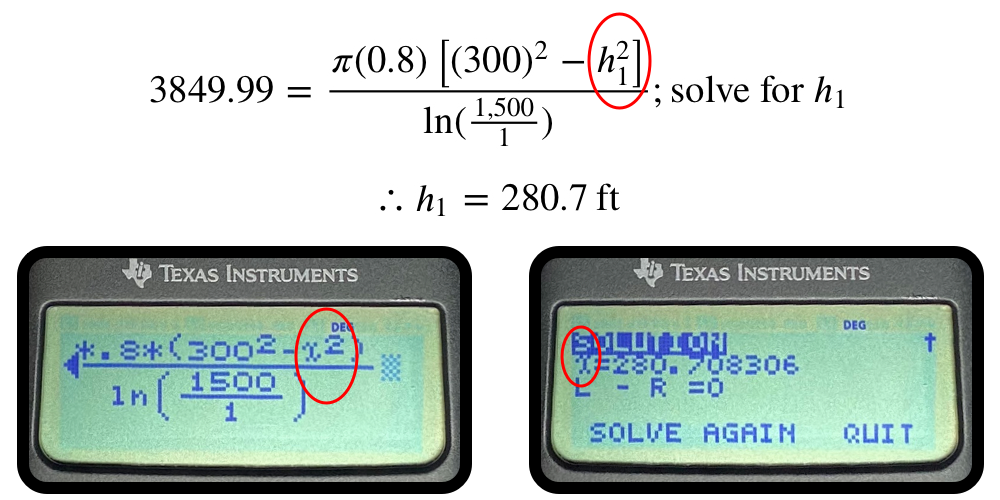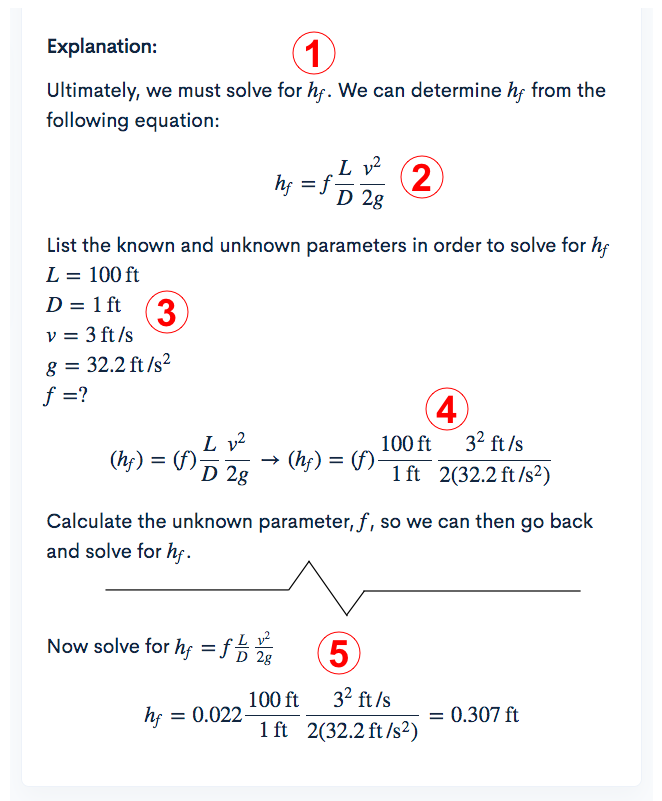FE Study Guide: Study Tips for Optimal FE Exam Review

In the list below, we go over our top 12 tips that will help you prep for the FE exam. The list below is based on our anecdotal experience after passing the FE exam in civil, mechanical, electrical engineering. We also incorporate tips and tricks from the PrepFE community who have successfully passed the Fundamentals of Engineering (FE) exam.
1. Familiarize yourself with the detailed list of topics asked on the FE exam.
You probably already know that the FE exam covers the majority of your engineering undergraduate courses e.g. statics, mathematics, etc but did you know NCEES, who creates the exam, publishes a list of the exact topics that could be asked on the FE exam? Knowing the exact topics asked on the FE exam e.g. mass moment inertia, and not just the overall category e.g. statics, will ensure the FE exam doesn't come out as a surprise to you.
2. Review your weakest, heavier-weighted subjects first.
The FE exam has about 14 different topic categories/subjects e.g. statics, math, dynamics, etc depending on which FE you are taking. Some of these categories have the potential to have more questions on the exam than others. For example: Civils should only expect to see 4-6 dynamics questions on the exam but expect to see 10-15 geotechnical engineering questions. We recommend you look at the different exam topic categories and decide which categories you need to study first with regards to the number of possible questions on the exam and how prepared you currently feel in that category. We recommend you prioritize your studying in this order (left to right):
.png)
3. Leave for last subjects you never saw in school.
It’s possible for the FE exam to ask about 1-2 topics that just weren’t part of your undergraduate engineering curriculum. This is sometimes the case with topics such as Dynamics for civil engineers or Engineering Economics for mechanical engineers. You could very well teach yourself enough about these topics to tackle them on the exam; however, it will certainly be more time consuming to prep for those topics than to prep for the topics you did see in school. We’re not saying you should just ignore these topics, we’re just saying leave their review for last. Go after the questions you have a better chance of getting right first.

4. Sign up for a complete and structured FE Exam prep source
Sure, you probably have a handful of engineering practice problems laying around. You could probably find a handful on the internet too. These methods might work, but you are risking knowledge gaps in your preparation by not using an FE review textbook or online FE exam prep service such as PrepFE. Using a structured and complete FE exam review source ensures you're not wasting time studying for topics that aren't even on the FE exam or worse, you end up not studying for some topics that are key to passing the FE. If you have been out of school for many years, there are some FE review sources out there that include lecture videos... although sometimes at a higher price tag.
Learn more →
5. Simulate the real test-day experience by practicing problems with a sense of urgency.
During the actual FE, you will get 5 hours and 20 minutes to solve 110 questions. That approximately equates to a little under 3 minutes per question. However, not all questions on the exam will take the same amount of time to solve e.g. an ethics question might take 45 seconds while a dynamics question might take 5 minutes. To get in the habit of answering questions as fast as possible during the exam, rush yourself when doing practice problems. Get ready for the exam by doing practice problems under that rushed, stressful mindset that happens during the actual FE.
PrepFE has a popular feature where you can take timed FE practice exams as a way to mentally prepare you for the real FE exam experience.
Start FE exam simulation →
6. Re-do from scratch every problem you get wrong (don't peek at the solution).
If you get a practice problem wrong, don’t just look at the solution and say ‘ok this makes sense’ and then move onto the next problem. Instead, look at the solution and understand what is going on in the problem. Now, re-do that problem from scratch without ever looking at the solution. Talk to yourself aloud while you re-do this problem. That way if you face a similar problem on the actual FE, you will know exactly what to do as you’ve built some “muscle memory” for that type of problem.
7. Understand the basic theory behind the practice problem but don't spend time diving in too deeply.
Many FE problems will be ‘plug 'n chug’, but many also won’t be. The FE also loves throwing some curveballs at you. They will deliberately work out a problem incorrectly and then put that answer as one of the possible solutions to trick you into thinking you got the problem right. If you understand the basic theory behind the practice problem, you will catch any tricks the FE might throw at you. Since there are so many different topics to review, don’t go too far into the nitty-gritty theory details to where it’s taking too much time away from reviewing other subjects. Simply understand the basic theory just beyond the typical ‘plug 'n chug’. However, don't compromise studying other subjects because you dove in very deeply into the theory of another topic. We recommend you just have a basic understanding of theory, a step above plug-n-chugg.
8. Take advantage of your calculator’s advanced features.
Go ahead and buy an approved calculator for the exam. Get comfortable with it before the exam. We recommend the TI-36X Pro as it's affordable, full of features, and many of us are used to TI calculators from our high school days. We also wrote an article where we show you how to use some of the more advanced calculator features such as integration, derivatives, and the equation solver. You can save yourself a lot of time during the exam by taking advantage of these calculator features.
9. Work problems backwards.
Taking a trial and error approach is usually an inefficient way to solve engineering problems. With trial and error, i.e. stating what’s given and then looking out for different equations that might work together, you can go off the wrong path to solve a problem and not realize so for a while.
Solve a problem ‘backwards’ by:
- Determine which variable the problem statement asks for.
- Look for an equation on the FE Reference Handbook that has this variable as one of its variables.
- If there are several equations with the desired unknown variable, pick the equation that has the least unknowns.
- Fill in the variables you know into the equation and then start solving for the remaining unknown variables.
- Once you determine all the unknown variables, go back to the equation from step 2 and solve the problem statement’s unknown variable.
10. Use the latest FE Reference Handbook PDF for practice and know it inside and out.
You will constantly refer to FE Reference Handbook throughout your exam. Keep things in mind:
- The more familiar you are with the handbook, the more time you will save finding formulas, tables, and other information.
- Use search (CTRL-F, CMD-F) for finding what you need quickly. You will not have a physical handbook during the official exam, so get used to looking things up on a digital version fo the FE Reference Handbook.
- There are some problems that can simply be "looked up" in the handbook. A few may have answers simply listed there (like an ethics problem and other conceptual problems), and some may be a simple ‘plug 'n chug’ with only 1 formula used.
- Unit conversions take time and are prone to simple mistakes. Take advantage of the unit conversion tables in the FE Reference Handbook.
- Make sure you're using the latest version of the FE Reference Handbook. The handbook has actually changed a lot over the years (equations have been added-removed) to where it can make a difference.
11. Don’t cram before the exam. Sleep more than you normally do the night before the exam.
If you feel the need to cram the night before the exam, don’t. It is not worth it. Don’t compromise all your hard studying from previous days (months) by staying up all night. Give your brain some rest, so you’re fully charged and ready to go the morning of the exam. Nothing's worse than compromising weeks or months of studying because you stayed up studying a topic that might only show up as 1 of the 110 questions on the exam.

12. Don't waste time prepping with outdated textbooks - the FE changed in 2020.
Starting July 2020, the FE exam will be using an updated list of exam topics. Many of the study prep books out there haven’t been updated in years and contain information that is no longer relevant to the exam. PrepFE prides itself on being a technology company that is able to quickly adjust itself to changes. In the PrepFE dashboard, you select when you are taking the exam, and the website and mobile app will automatically adjust itself to show you only the questions that are relevant to YOU. Additionally, PrepFE is continually improves and updates its question bank to help you learn the most efficiently.
